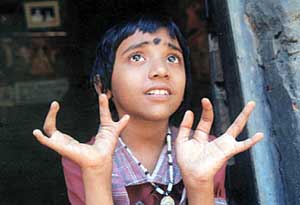This heart rending image of a deformed girl from Kasargod district in Kerala, India brings to our notice the stark realities of indiscriminate and excess use of hazardous pesticides without the least concern for the well being of people inhabiting near the plantations. Northern Kerala is particularly suited for the cashew crop, which was introduced in India by the Portuguese in 16th century from Brazil. Since the climate is ideally suited for the crop, it has struck deep roots in the Kerala soil and has become as much a Kerala crop as pepper. This small state on the western coast of India is notorious for its communist ideals which are still advocated fiercely, often with physical force by its adherents. No wonder, most of the large industries in Kerala are state-owned and managed (most often) by illiterate and corrupt politicians, but that’s another story. The Plantation Corporation of Kerala is a state-owned enterprise in the agricultural sector, whose sole job is to produce rubber, cashew, oil palm and such crops and sell the products. In 1976, the corporation decided to employ Endosulfan in its cashew estate on the hills nearby Padre village in Kasargod district of Kerala. Like how they did in their rubber plantations, the corporation used the new, and highly toxic pesticide using helicopters. The villagers of Padre draw water from four streams, Kodenkeri thodu, Swarga, Pathadka and Badiyaru which run through the plantation. Naturally, the water became toxic and the unsuspecting public drank it leading to severe health, neurologic and reproductive complications, with the image of the child being a minor one of them. We’ll find more serious deformations and diseases among the other members of the village.
Several studies have documented that endosulfan can affect human development. Researchers studying children from Padre have linked endosulfan exposure to delays in sexual maturity among boys. The researchers compared the villagers to a control group of boys from a demographically similar village that lacked a history of endosulfan pollution. Relative to the control group, the exposed boys had high levels of endosulfan in their bodies, lower levels of testosterone, and delays in reaching sexual maturity. Birth defects of the male reproductive system including cryptorchidism (the absence of one or both testes from the scrotum) were also more prevalent in the study group. The researchers concluded that "our study results suggest that endosulfan exposure in male children may delay sexual maturity and interfere with sex hormone synthesis."
Endosulfan (chemical name - hexachlorocyclopentadiene) is a highly effective pesticide, developed in 1954 by Hoechst AG, now Bayer CropScience. Current annual world production is 12,800 tons, out of which 8,500 tons are produced in India by three players, Excel Crop Care, Coromandal Fertilizers and the state-owned Hindustan Insecticides. 4,500 tons are for domestic use and 4,000 tons are exported from India. It is no wonder why the government of India strongly resisted attempts in international fora to include the pesticide under the Stockholm protocol which attempts to restrict the use of Persistent Organic Pollutants (POP). With more than two-thirds of the world production at home, who would let that money go? Moreover, one among the three companies is a state-owned one with all profits going to the government alone.
The Plantation Corporation has long since stopped aerial spraying of Endosulfan. The last such application of pesticide was in 1991. Since it is clear that the hundreds of people who had lost the reason for existence and have become preys of a chemical disaster which could be compared to the tragedy at Bhopal in 1984, are the victims of an industrial disaster, they must be compensated accordingly. Nothing can bring their happiness and well being back - those are irretrievably lost – but still, an enlightened society have what are available to them to give to those poor wretches, money and medical care.
So what is the solution to ensure that such incidents don’t happen in future? Is it the ban on Endosulfan? Absolutely not, by any means! Any chemical, with pesticides in particular are highly toxic and should be handled with utmost care. In this present case, the indiscriminate aerial spraying was the culprit and the company which did it must pay dearly for the lives it has devastated. Surprisingly, the Plantation Corporation has managed to go scotfree by giving a pittance because it is a state-owned enterprise! The communists, who are ruling Kerala at the moment is spearheading a campaign to ban endosulfan, like the chemical was the culprit. The people who hold Doe Chemicals which acquired Union Carbide after the Bhopal tragedy responsible for the gas disaster are mum on the role of Plantation Corporation of Kerala. Being a state-owned company, does it confer the right to mercilessly extinguish the light in the lives of people? And why ban Endosulfan, when the real criminals escaped and are running agitations against the chemical? If a car kills a person in an accident, who is responsible, the car driver or the company which manufactured the car? Such simple logic is lost on those who go out like herds following a long since discarded political system in the world.











